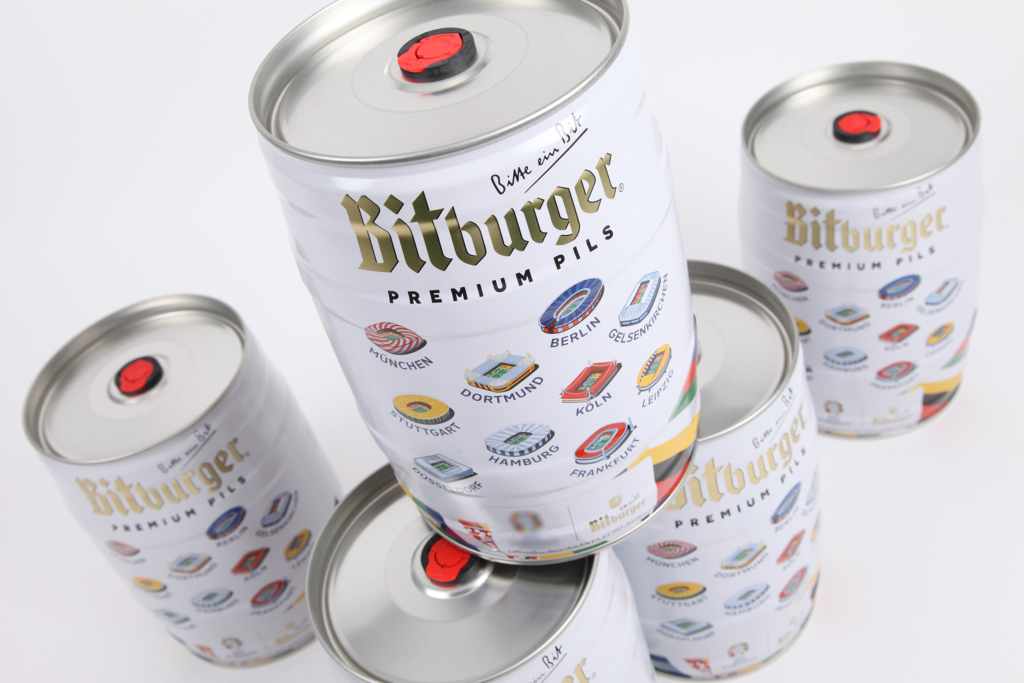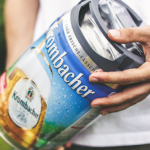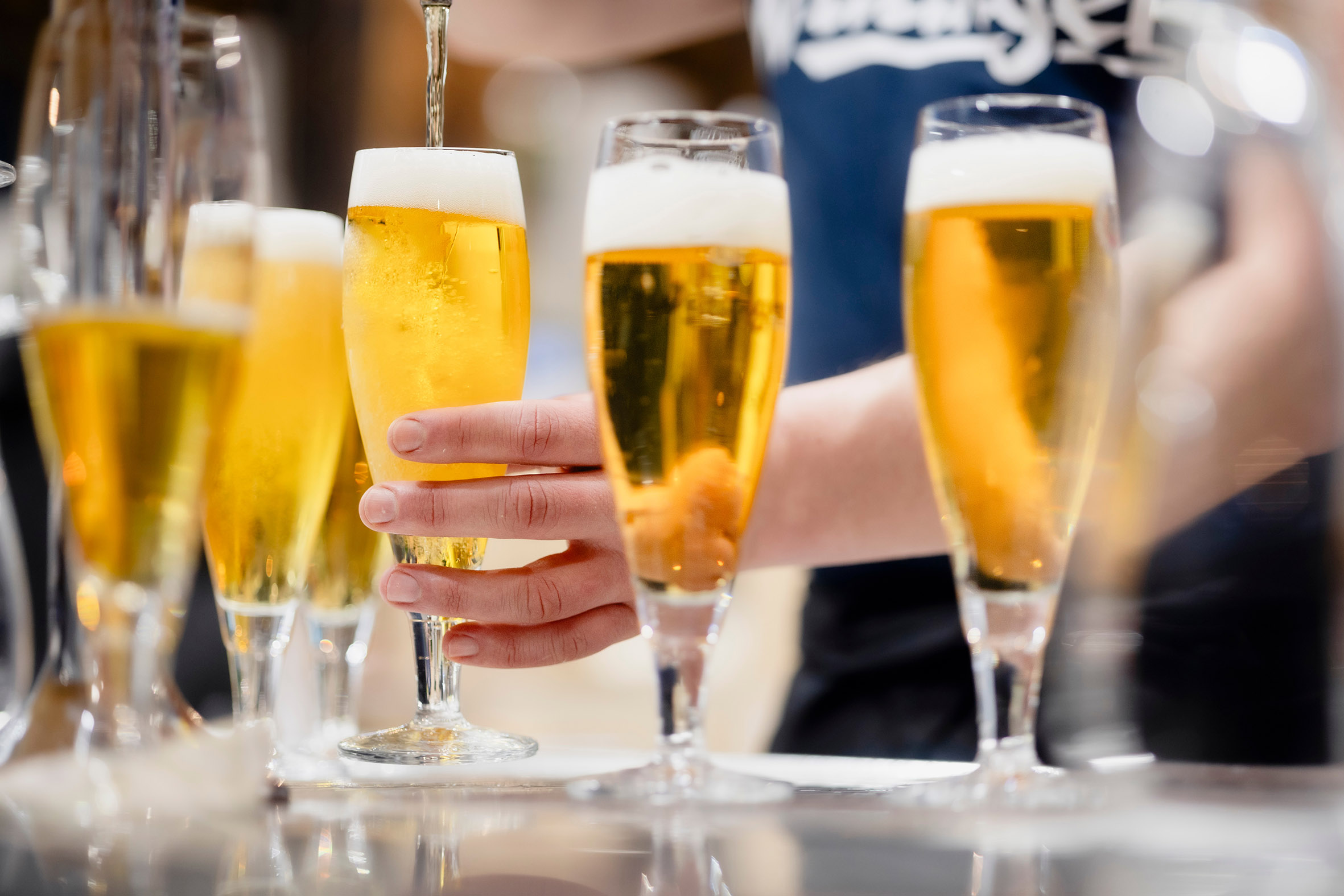Pils is not only synonymous with German brewing craftsmanship but also remains the most widely consumed beer in the country. No other beer enjoys such consistent popularity as Pils. But what makes this beer so special, and why has it been a bestseller for decades? In this article, we delve into the history, characteristics, and current market development of Pils to explore why it continues to be Germany’s favorite beer.
The History of Pils: From Bohemian Roots to a German Favorite
Pilsner beer was first brewed in 1842 in the Bohemian city of Pilsen, now part of the Czech Republic. German brewmaster Josef Groll created the first Pilsner, a bottom-fermented beer with a clear, golden appearance and strong hop flavor. At the time, the region was home to top-quality barley varieties (Haná) and one of the most aromatic hop varieties (Saaz). The water in the Czech region was also ideal for brewing, being slightly acidic, low in carbonates, and low in sulfur. These were the perfect conditions for Groll to brew a beer that was unlike anything the brewing world had ever seen: it was lighter, more effervescent, and had a bitterness that was unique for the time.
Groll’s innovation in Pilsen quickly found imitators in Germany. Particularly in the north and west, breweries began producing Pils according to German brewing methods. While malty beers like Helles and Dunkles remained dominant in Bavaria, Pils quickly became the preferred beer in Germany. By the 1960s, it had established itself as the country’s favorite beer style and has held this top position ever since.
What Defines a Pils? Typical Characteristics and Variations
 picture source: AdobeStock_65992838[/caption]
picture source: AdobeStock_65992838[/caption]
A classic Pils is distinguished by its golden color, clear appearance, and fine-pored foam head. The alcohol content typically ranges between 4.5 and 5.0 percent, though there are regional differences. Pils is brewed using bottom-fermentation, which means the yeast works at cooler temperatures (between 5 and 10°C) and settles at the bottom of the fermentation tank.
The flavor of Pils is defined by a pronounced hop bitterness, which gives it a fresh and slightly bitter note. Typical hop varieties used in Pils include Hallertauer, Tettnanger, and Saazer. The hops not only provide the characteristic taste but also lend the beer an aroma that can range from floral to slightly grassy. Despite the dominant hop bitterness, the Pils remains well-balanced and easy to drink.
Pils as the Most Popular Beer on the Market: Stats and Facts
In Germany, Pils still accounts for over 50 percent of the beer market, and in northern Germany, it makes up nearly 70 percent. According to the German Brewers Association, it is by far the best-selling beer in the country. Pils also holds a prominent place on the shelves of beverage retailers. While other beer styles like Helles or craft beers have gained market share in recent years, Pils remains a reliable revenue driver.
One reason for Pils’ dominance is its versatility: it pairs well with a wide variety of dishes, from hearty German cuisine to international foods. Pils is served not only in bars and pubs but is also the beer of choice for many private events like barbecues, birthday parties, or soccer nights. That is why, for decades, many breweries have offered Pils in 5-liter party kegs. This everyday presence makes it an essential product for brewers and beverage retailers alike.
Famous and Popular Pils Breweries in Germany: Tradition and Quality, Also in Minikegs
Germany is home to many renowned breweries that have specialized in producing Pils and have shaped the beer style. At Envases, we are particularly proud that some of these well-known traditional breweries also choose the Minikeg format for their Pils.

- Bitburger Brewery: The Bitburger Brewery from Rhineland-Palatinate is one of the most famous Pils breweries in Germany. Their “Bitburger Pils” is deeply ingrained in the consciousness of German beer drinkers with the famous slogan “Bitte ein Bit” (“Please, a Bit”). It stands out for its characteristic hop bitterness and crystal-clear golden color. Bitburger is among the best-selling Pils beers in Germany and is widely available in both restaurants and retail market. As the official beer partner of the 2024 European Championship, Bitburger also promoted the party keg as an attractive package
- Jever Brewery (Friesisches Brauhaus zu Jever): In northern Germany, Jever Brewery is particularly famous for its “Jever Pilsener.” This Pils is known for its especially strong hop bitterness and dry, crisp taste, making it one of the most distinctive Pils in Germany. Founded in 1848, the brewery places great emphasis on using regional raw materials, and it remains the top choice for those who appreciate bitter beers.

- Warsteiner Brewery: Located in the Sauerland region, Warsteiner is one of Germany’s largest private breweries and is internationally recognized. Its “Warsteiner Premium Verum” is a classic Pils, offering a balanced blend of mild hop bitterness and light malt notes. Warsteiner upholds a long brewing tradition while employing cutting-edge technology to ensure consistent quality. It enjoys popularity both domestically and in many export markets.
- Krombacher Brewery: With its “Krombacher Pils,” Krombacher is one of Germany’s largest and most successful Pils producers. The Pils stands out with its mild and refreshing taste, combined with balanced hop bitterness. The brewery relies on soft spring water from the region, giving the beer its unique character. Krombacher Pils is one of the best-selling Pils in Germany, available in supermarkets, beverage stores, and widely enjoyed in restaurants. Krombacher has even been using the 5-liter freshness kegs produced exclusively by Envases since 2021, which have great future potential as containers.
 Veltins Brewery (Brauerei C. & A. Veltins): Also based in the Sauerland, Veltins Brewery is another well known producer of Pils. This Pils is known for its fresh hop note and slightly dry taste. The brewery places a strong emphasis on traditional brewing methods and high quality. Over the past few years, Veltins has grown in popularity, especially among younger audiences and at events, solidifying its place in the German Pils market. Innovative beer varieties, their focus on non-alcoholic types as well as their popular Pilsner in a mini keg ensured record sales in 2023.
Veltins Brewery (Brauerei C. & A. Veltins): Also based in the Sauerland, Veltins Brewery is another well known producer of Pils. This Pils is known for its fresh hop note and slightly dry taste. The brewery places a strong emphasis on traditional brewing methods and high quality. Over the past few years, Veltins has grown in popularity, especially among younger audiences and at events, solidifying its place in the German Pils market. Innovative beer varieties, their focus on non-alcoholic types as well as their popular Pilsner in a mini keg ensured record sales in 2023.- Radeberger Brewery: Located in Saxony, Radeberger Brewery plays an important role in the German Pils segment with its “Radeberger Pilsner.” Radeberger was the first beer brewed exclusively in the Pilsner style in Germany and has been making a name for itself since its founding in 1872. The Pils is distinguished by its fine hop aroma and light malt note. The brewery is renowned for its high-quality products and exports its Pils to many countries worldwide.
Pils in the USA: The Influence of European Immigrants
The Pilsner style made its way to the USA through European immigrants, particularly German and Czech brewers who settled in the country during the 19th century. Well-known breweries such as Anheuser-Busch (Budweiser) and Miller Brewing Company began producing lager beers in the Pilsner style, quickly establishing themselves as market leaders.
Although American “Pilsners” tend to be lighter and less hop-forward compared to their European counterparts, they have significantly shaped and popularized the Pilsner style in the U.S. These American versions made lager beers a staple of American beer culture, and Pils remains an important reference point in the U.S. beer market, despite increased competition from craft beers and IPAs in recent years.
Asia: A Growing Market for Pils
In Asia, especially in countries like China, Japan, and South Korea, Pils has gained considerable traction in recent decades. Chinese brands like Tsingtao, originally founded by German brewers, produce beers in the Pilsner style. The refreshing and relatively light character of Pils fits well with Asian consumption habits and the region’s climatic conditions.
Japanese breweries such as Asahi, Kirin, and Sapporo also brew Pilsner-style beers. These versions are often lighter than the European originals and have a subtle hop note that pairs well with traditional Japanese cuisine. In Southeast Asia, where the climate is hot and humid, Pils is similarly popular as a refreshing and easy-drinking beer.
Pils: The Most Popular Beer Style in Germany and a Global Classic



